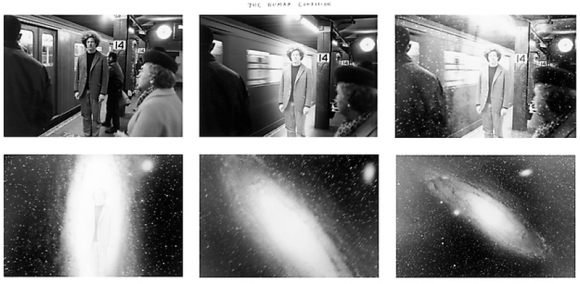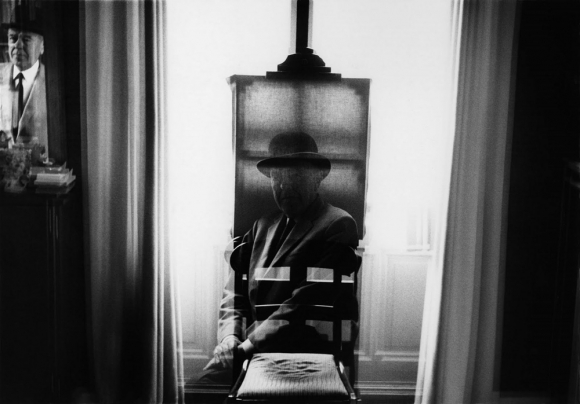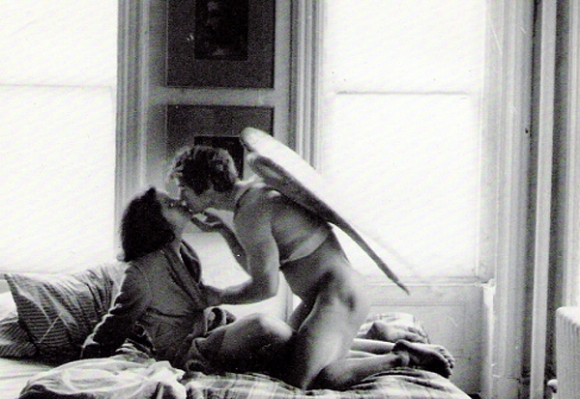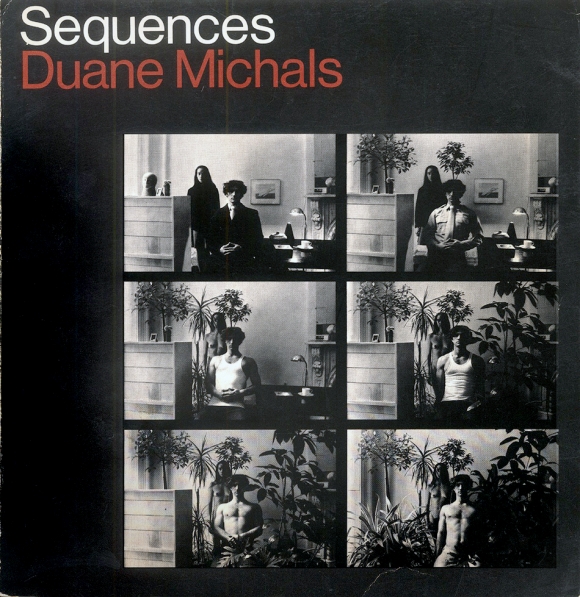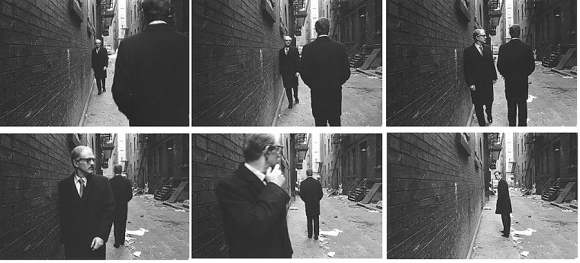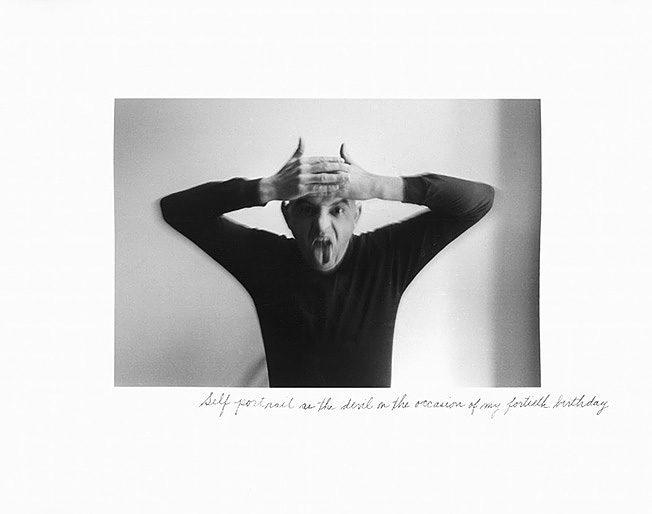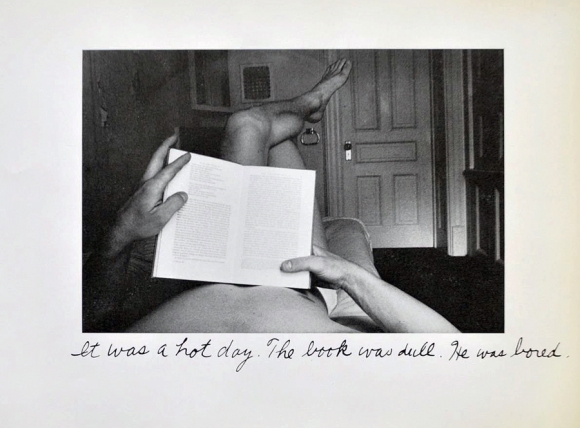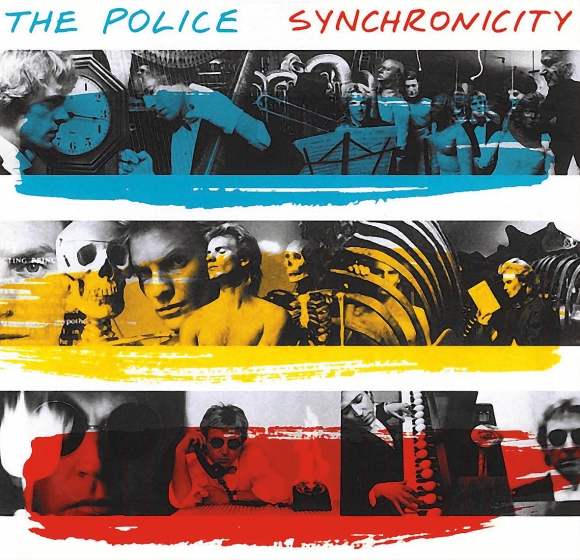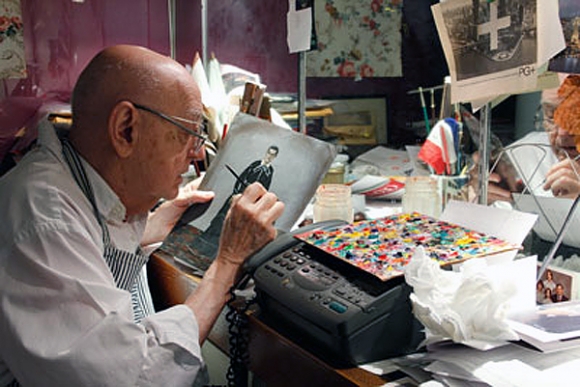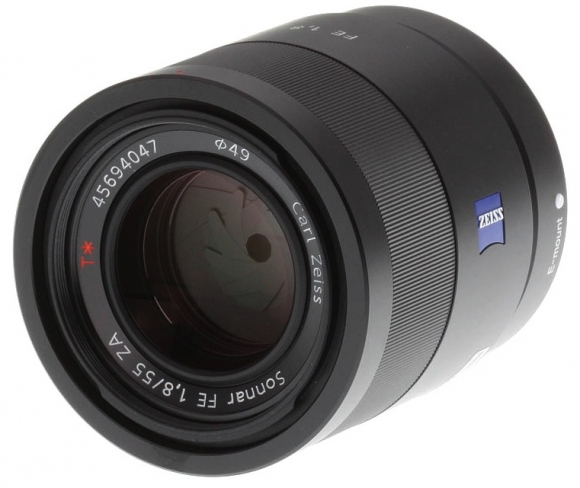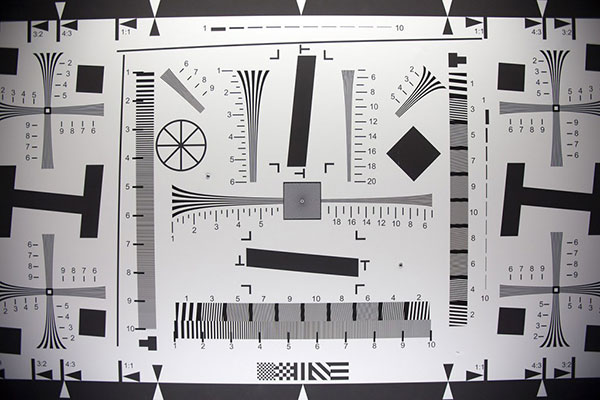=================================================================
To subscribe, unsubscribe or change your email address, visit:
http://www.imaging-resource.com/IRNEWS/index-subs.html
Support the Newsletter!
- Find the best price for anything at http://ir.pricegrabber.com
- Shop Amazon, Adorama at http://www.imaging-resource.com/buynow.htm
=====================================================
THE IMAGING RESOURCE DIGITAL PHOTOGRAPHY NEWSLETTER
=====================================================
Volume 15, Number 25 - 22 November 2013
----------------------------------------------------------------------
Copyright 2013, The Imaging Resource. All rights reserved.
----------------------------------------------------------------------
Welcome to the 373rd edition of The Imaging Resource Newsletter. This issue, Dan Havlik reviews the Sony HX300, a nifty 50x superzoom that captures photos most other cameras can't. Next up, Steve Meltzer takes a look at the provocative work of master photographer Duane Michals, and recounts a few stories about his encounters with him. We also share our Sony FE 55 f/1.8 lens review -- a hot lens meant to be paired with Sony's new full-frame mirrorless cameras -- as well as tips on wide-angle macro lighting from pro Paul Harcourt Davies, first shots taken with the new Nikon D5300, and a compelling read about so-called "in spec" lenses by our friend Roger Cicala, of LensRentals.com. Happy reading!
TOPICS
----------
Get Social with IR
Sponsors
Camera Review: Sony HX300 Shooter's Report (Excerpt)
Feature: Angel or Devil? Meet Duane Michals, The Photographer Who Invented Himself
Quick Hits: Sony FE 55mm f/1.8 Lens Review, Wide-Angle Macro Lighting, Nikon D5300 First Shots & More!
We've Got Mail
New on the Site
Next Issue
Signoff
GET SOCIAL WITH IR
---------------------------
If you want to stay up-to-date with the latest camera and photography news, get notified when IR posts its latest camera or lens review, and much more, please get social with us on your favorite networking sites by:
By doing so, you'll also be supporting our efforts to deliver the best camera and photography content on the planet. (Google in particular apparently pays lots of attention to Google+ in deciding site/page relevance for its search results, so "circling" us there and +1-ing our site and pages would be an especially big help.) Thanks! We appreciate it!
SPONSORS
--------------
This issue is sponsored in part by the following companies. Please show your appreciation by visiting the links below. (Visiting our sponsor's links really helps support this newsletter, thank you for your attention!) And now a word from our sponsors:
* Olympus *
Introducing a camera as revolutionary as you are.
The Olympus OM-D E-M1
Take incredible images anywhere you go.
Move into a new world
Re-imagined
Redesigned
Revolutionized
See for yourself: http://www.imaging-resource.com/cgi-bin/nl/pl.cgi?olyfz1
* Sigma *
Sigma's new Global Vision lenses feature the latest technology
and combine optical performance resulting in a tour de force
that meets all of your photographic needs.
Our new lenses include the new
35mm F1.4 DG HSM 'Art',
17-70mm F2.8-4 DC Macro OS HSM 'Contemporary' and
120-300mm F2.8 DG OS HSM 'Sport'.
Our cameras, featuring the Foveon X3 sensor, include the SD1 and the
DP Merrill, produce the highest quality digital images.
Learn more about Sigma offerings at http://www.imaging-resource.com/cgi-bin/nl/pl.cgi?sg13
-----------------------------------------------------------------------------------------------------
Are you in the digital photo business? This newsletter is read by more than 47,000 direct subscribers (plus additional pass-along readers), all with a passion for digital photography. For information on how you can reach them, contact us at editor@imaging-resource.com.
-----------------------------------------------------------------------------------------------------
REVIEW: Sony HX300 Shooter's Report (Excerpt)
-----------
(Check out our complete review of the Sony HX300 superzoom camera, featuring our ultimate conclusion: http://www.imaging-resource.com/PRODS/sony-hx300/sony-hx300A.HTM)
by Dan Havlik
As someone who gets to test a lot of high-end gear, including many professional digital SLRs and lenses, I tend to be snobbish towards cameras like the 20.4-megapixel, 50x optical zoom Sony HX300. But a lot of us forget that despite the popularity of interchangeable-lens camera systems -- including all the mirrorless compact system cameras continuing to flood the market -- all-in-one, superzoom "bridge" cameras are still a highly attractive option for novice photographers. And why shouldn't they be? With versatile, incredibly long zooms and a bevy of features, fully-loaded superzooms like the HX300 are handy image-making tools for travelers and tourists alike.
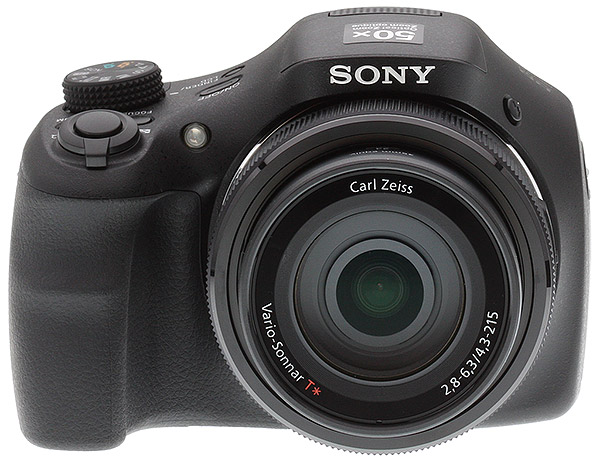
I found that out last year, when I took the HX300's predecessor, the 18.2-megapixel, 30x optical zoom HX200V on a trip to Berlin, Germany. While I didn't like everything about the HX200V -- its image quality wasn't always up to snuff in challenging situations -- it allowed me to travel with one camera and no additional lenses, yet still get plenty of great shots in a variety of locations and scenes in Berlin.
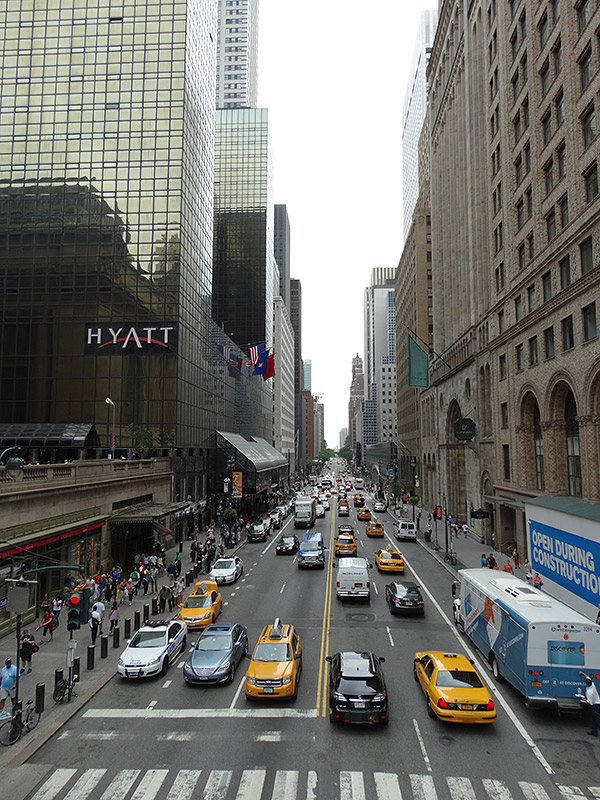
Aside from the jump from a 30x to a 50x zoom (which is a significant boost), the Sony HX300 offers only a few other upgrades from the previous model. In a few areas, it actually takes away a few features that were on the older camera. That HX300's larger zoom also makes the camera slightly larger and heavier, and bumps the price up just a bit, with this new model retailing for $500 list. Is a bigger bridge camera with a more powerful zoom, worth your time, money, and consideration? Let's take a look at this new superzoom champ from Sony.
In the hand. As we already stated in the earlier walkaround section, the Sony HX300 looks and feels a lot like Sony's entry-level DSLRs. At the same time, however, it's a little less serious than those models -- which makes sense, given its more consumer-focused audience. Maybe it's the HX300's almost completely curved design, which, aside from the rectangle inset of the 3-inch, fold-out LCD screen, has no right angles. Or maybe it's the slight, lower-slung electronic viewfinder on top of the camera, which gives the HX300 a more modern appearance. Either way, this Sony flagship superzoom may seem advanced with all its features, but it looks and feels accessible and unintimidating. This should appeal to novice users.
The Sony HX300's textured, rubber handgrip is robust, boasting an ergonomic design with indentations for your middle and third fingers. My hand fit comfortably around it. As opposed to some mirrorless, compact system cameras I've tried, which always seem ready to fly out of your hand, the Sony HX300 felt more like an extension of my hand. It is, however, fairly heavy, weighing about 23 ounces,. That's heftier than the previous model, and comparable in weight to some entry-level DSLR bodies, if you ignore their lack of a lens. Even when it's retracted, the HX300's 50x lens juts out a few inches from the camera body, presenting a bigger package than many CSCs. And, of course, when you zoom the HX300's lens out to its full 1,200mm-equivalent setting, this superzoom becomes a bit of a beast.
I wasn't able to stash the Sony HX300 into a coat pocket -- it was too big and bulky -- but it fit easily into a small camera bag and seemed ideal for travelling. (And considering how much is packed into this superzoom, it beats carrying around a camera body and a collection of lenses, all image quality concerns aside.)
One slight annoyance that struck me about using the HX300 out in the field -- and I had a similar issue with the HX200 before it -- is that the camera has a bit of a rattle when you move it around, making it feel less solid than a DSLR.

Controls. Since the Sony HX300 is aimed, primarily, at less experienced photographers, controls are pretty basic, and for the most part logical. We've detailed where everything is on this camera in the walkaround section above; now let's address the usability of the camera's knobs, switches, dials and whirligigs.
In short, everything works as it's supposed to, albeit with a few quirks. I liked the slightly more raised Shutter button with the surrounding Zoom ring of the Sony HX300, but it still felt mushy. It's similar to the difference between the vague steering you find on most cars these days, and the tighter, more tuned control on sportier models. While the black matte shutter is more attractive than the glossy, shiny metal on the previous camera, it still seemed on the cheap side, as did the plastic zoom ring around it. Otherwise, the polycarbonate top deck of the HX300 and the four slightly recessed buttons looked spiffy, and stayed out of my way when I didn't need them. The raised, knurled Mode dial was also pretty snazzy, and had a nice Goldilocks quality to it: not too tight to turn and not too loose, preventing accidental changes.
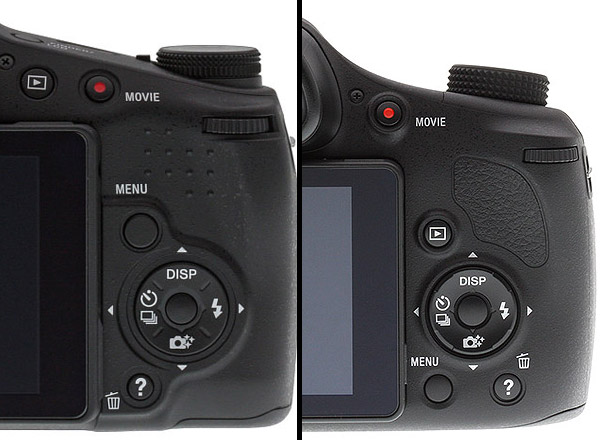 |
The button layout on the rear of the Sony HX300V (right) underwent only minor changes compared to the previous model, the HX200V (left). The Movie record button has been moved slightly farther away from the thumb-rest area. |
On the back of the Sony HX300, the red Movie button was in an easy-to-see, easy-to-access location next to the electronic viewfinder and near the top of the camera. It's far enough out of the way of the thumb rest so that I didn't hit it by mistake. (That had happened to me a few times with the previous model, to my chagrin.)
What's most confounding about the controls of the Sony HX300, as was the case with its predecessor, is the multi-functionality of the plastic Jog wheel on back of the camera. If you didn't read the Sony HX300's manual, you might not know that the wheel, which sits on top of the rear thumb rest below the mode dial, doubles as a button. You can use it to change basic settings such as ISO sensitivity, shutter speed and aperture. To change sensitivity, for instance, you have to keep pressing the jog dial in until the sought-after setting lights up in yellow on the rear LCD, which allows you to adjust the ISO by turning the dial. The same system is used for aperture, shutter speed and exposure compensation. This setup may be common on Sony's superzoom cameras, but I doubt most folks will be able to figure it out on their own.
Otherwise, the rest of the Sony HX300's rear controls were pretty straightforward, if small and sparse. Would it have killed Sony to have put a dedicated ISO button on the back of the camera, though, rather than making photographers tap that infernal jog dial?
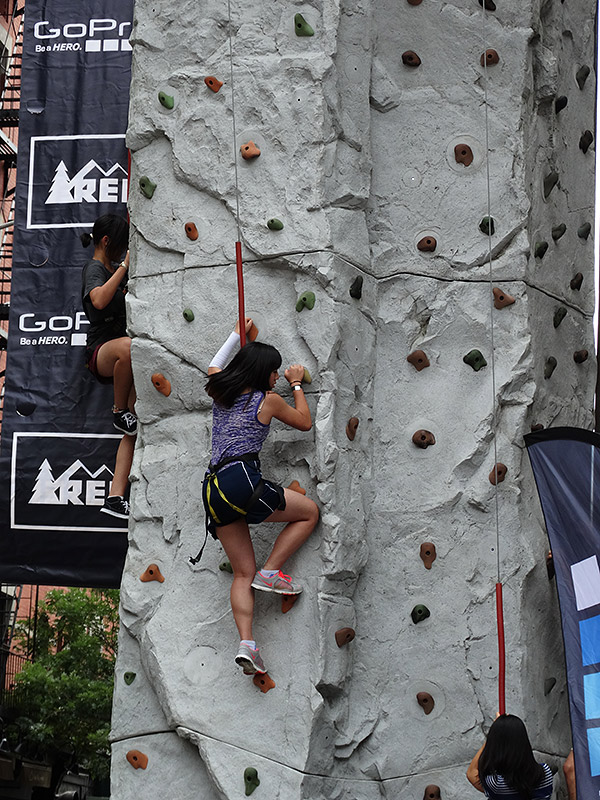
LCD screen and EVF in use. The 3-inch, fold-out LCD screen on back of the Sony HX300 is the same as that of the previous model, and while it's a very good display, it would've been nice if it had been upgraded. As it is, the screen had ample resolution (921,000 dots) for previewing and reviewing my shots. As with many LCDs, it can be hard to see in outdoor light. I shot with the HX300 extensively in bright, summer light while using the camera during Summer Streets in New York City. For those not familiar with the event, during Summer Streets on Saturdays in August, nearly seven miles of NYC's streets are shut down to car traffic, and pedestrians are free to walk, run, or bike on the roads. It's a fun event, and the HX300 proved to be a handy companion.
Big crowds lined the Summer Streets route and dancers, musicians and performers held demonstrations to entertain the crowd along the way. Though I'm a tall guy, it was nice having the fold-out LCD screen, which allowed me to hold the Sony HX300 over my head, and compose shots over the crowds of people. In particular it helped me get some good photos and video of a jump rope crew performing. A side-swiveling screen would have been even better for composing shots from difficult angles -- and for selfies! -- and it would have been a nice upgrade to set the HX300 above its predecessor. (However, it might also have added significantly to the price, which could explain why it wasn't added.)
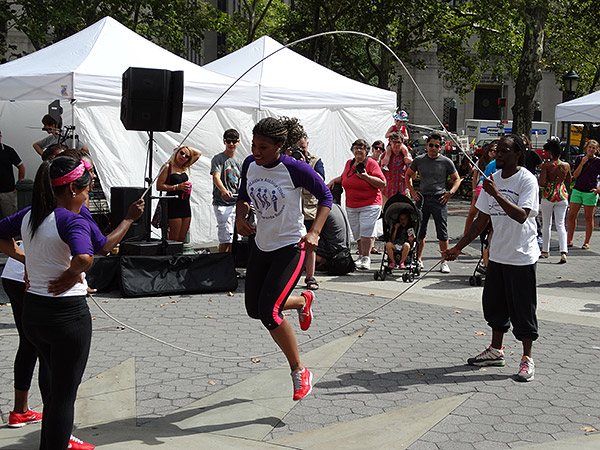
The Sony HX300's electronic viewfinder, which is based around a 0.2-inch LCD panel, also hasn't been upgraded from the older camera. That's even more of a shame, as I found it very cramped -- I had to squint to see through it -- and the 201,600 dots of resolution weren't enough to create a sharp, live preview. While shooting in the bright light of Summer Streets, it helped me compose shots in pinch when the rear LCD completely washed out, as it often did. But it wasn't ideal.
Also, as mentioned earlier, the Sony HX300's viewfinder does not have an eye detection function. Instead you have to hit a button on top of the camera to turn the EVF on. While the auto EVF feature on the previous camera was pretty lousy -- I remember it being glacially slow to engage, which caused me to miss some shots -- it would have been nice at least to have it as an option on the HX300, especially if Sony could have made it work quicker.
Superzoom lens and autofocus. The Sony HX300's key feature is, of course, its impressive 50x, 24-1,200mm equivalent (in 35mm format) superzoom lens. And it proved valuable for capturing photos I could not have possibly shot otherwise. (Unless, of course, I had a 1,200mm telephoto for my large-sensor camera, which I do not.) As part of the Summer Streets celebration, organizers had set up an urban zip line in Foley Square in front of the 1933-built U.S. Courthouse. With the HX300's wide zoom range, I was able to photograph a wide-angle scene setter showing the zip line apparatus in front of the classic courthouse, and then a zoomed-in shot to capture the excited faces of people riding the zip line. This also worked great when zooming for some action video footage of the zip line.
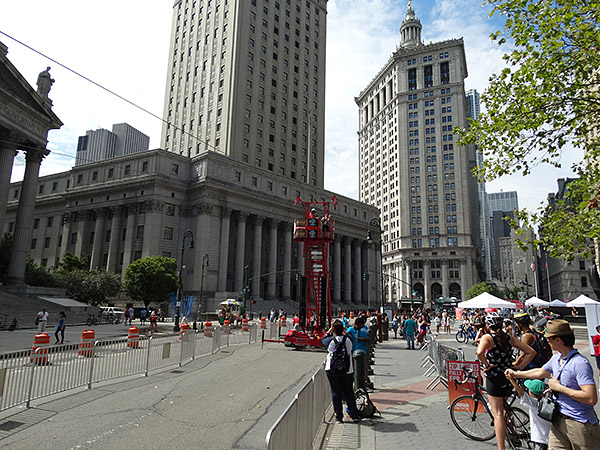 |
Wide-angle @ 24mm |
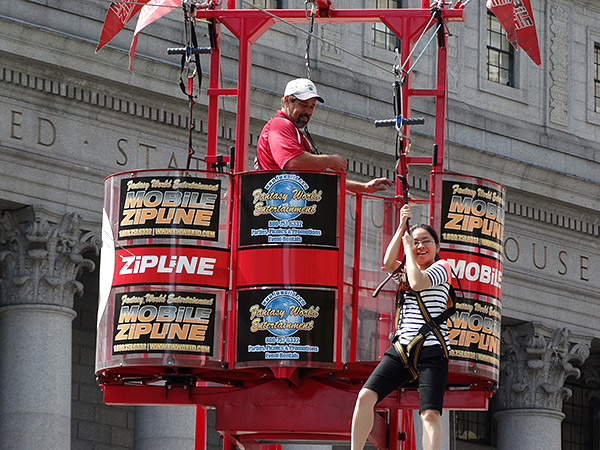 |
Mid-tele @ ~240mm |
Other great photo opportunities the Sony HX300's megazoom generated for me included a shot I captured of a group of pigeons standing on top of an extremely dirty traffic light in New York City. Not only was I able to isolate the birds and the light for a close-up composition, the compression the long zoom created isolated the foreground and flattened the background to add drama to the photo. My traffic light image, which I dubbed "New York Grime," ended up being voted one of the most popular of the day on photo-sharing site, 500px.

The Sony's HX300's long zoom also came in handy when I played local paparazzi right from my office window. Actor Ron Perlman grew up in the New York City neighborhood where my home office is, and I've seen him from time to time shopping at the local bakery and supermarket. (If you don't know Perlman, he plays Clay Morrow in the TV series "Sons of Anarchy," and has starred in many movies, including Blade II, and as the title comic book character in Hellboy and Hellboy II: The Golden Army.)
One day, while looking out my office window, I spied Perlman sitting on a sidewalk stoop with his dog. Thanks to the HX300's zoom and tilting LCD screen, I was able to hold the camera over my head while sitting at my desk, zoom in to get Perlman in the frame, and snap a few photos. Very cool and completely inconspicuous.

While the Sony HX300's generous 24-1,200mm optical zoom range is handy for a range of shooting situations, you do sacrifice on the aperture when you zoom in. At the widest angle, you can shoot at f/2.8, which comes in handy in mixed lighting situations. And since the HX300, like its predecessor, is a mediocre performer at higher sensitivities -- more about that below -- you'll find yourself trying to shoot at that f/2.8 aperture as much as possible. On the other hand, maximum aperture when you zoom all the way out to 50x is just f/6.3, making the Sony HX300 a poor performer in low light at the full telephoto position.
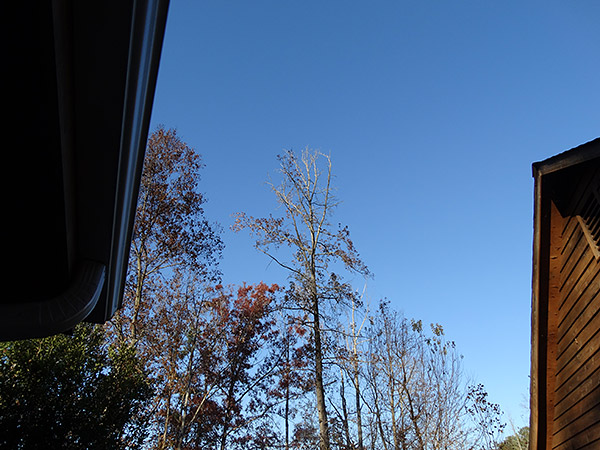 |
Wide-angle @ 24mm |
 |
200x zoom - 50x optical zoom with Clear Image Zoom and Digital Zoom enabled. |
The Sony HX300's autofocus speeds were a bit better than its predecessor, which was on the slow side. Sony says the HX300's sensor and processor work together to provide the extra bump in focusing speed. In our testing, the HX300 averaged about 0.38 of a second to lock in focus when shooting at the wide angle, and 0.13 second at telephoto. That's about average at wide angle, but very fast at telephoto for a superzoom camera. If you've shot with a DSLR before, though, you'll find the HX300 to be a step slow.
The HX300 features a new version of Sony's Optical SteadyShot system, which the company says is twice as powerful as that of its predecessor. The new OIS now performs better at the telephoto end, and I found it largely did a good job. When zoomed all the way out to 50x (which, you have to keep reminding yourself translates to 1,200mm!), the OIS kept the image relatively steady, though the Live View does tend to swim around on the rear LCD screen. That's not surprising considering how tightly it's framed, but if you find this distracts your framing of images, I'd suggest using the EVF for 50x shots. Thanks to Optical SteadyShot, my images had very little motion blur, and that's impressive considering how much reach the HX300's superzoom lens offers. While Optical SteadyShot is quite powerful, there's no way to turn it off on the HX300 if, for instance, you want to shoot with the camera mounted on a tripod.
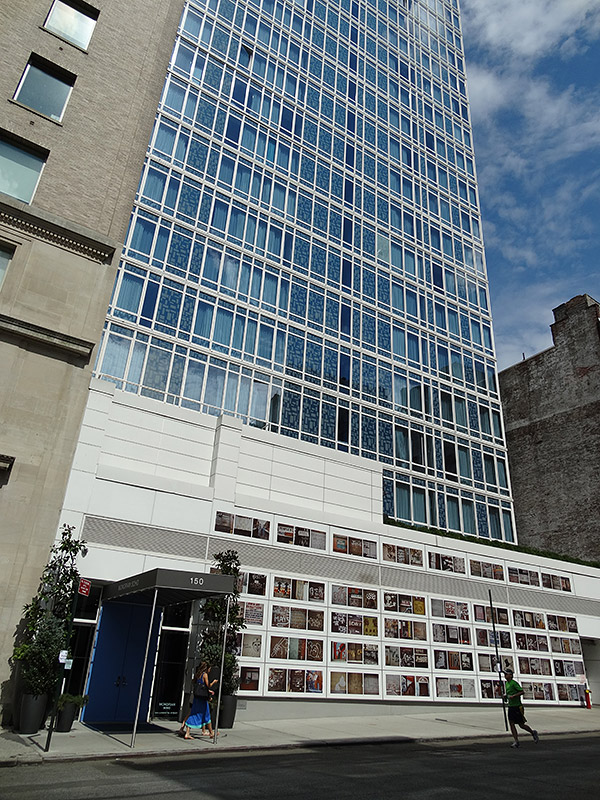
Operational performance. Along with the modest focusing speeds, the Sony HX300 is a slow camera to use all around. The HX300 averaged 2.4 seconds to power on and get to first shot, which is actually slower than its predecessor by about .2 of a second. Considering that the HX300's zoom lens is longer physically -- and by focal length -- that's not unexpected. But if you're in a hurry to fire off a shot quickly, this is not the camera for you.
Shot to shot, the Sony HX300 was about average for the class. I averaged cycle times of about 1 to 1.5 seconds, when shooting Large/Fine JPEG images using a SanDisk Ultra 8GB 30MB/s SD card. While that's not, in itself, terribly sluggish, the camera's rear display and/or EVF blacks out between shots, and it can feel like a lifetime not to see your subject if you're trying to capture a series of candid shots. (See further below for our lab performance results, which uses a faster 8GB 95MB/s SD card.)
The Sony HX300 does offer rapid-fire, 10 frames-per-second full-resolution burst shooting mode, but after you fire off a round of 10 shots, the camera takes a couple of seconds to store them before you can shoot again. This makes the burst function less useful for tracking and capturing fast action sports, which is a pity because the long zoom helps you isolate players from a distance. Anyone who has used a DSLR with a bigger buffer that lets you keep on shooting will find the Sony HX300 to be frustrating. And, if sports photography is your thing, you should probably invest in a DSLR.
I've always found Sony's menu systems on its consumer cameras to be confusing and out-of-date, and it's the same case with the HX300. Checking settings is a slow process -- scrolling through options and modes was sluggish and buttons were not quick to respond -- and the set-up, mentioned earlier, of having the HX300's jog dial on back of the camera serve as a button, was also painfully slow to use.
Image quality. Like it's predecessor, the Sony HX300 captures nice images in good light at low ISOs but it fairs poorly in mixed or dim lighting at higher ISOs. With the previous model, we felt that 18.2-megapixels was too much resolution for a camera with such a small sensor, resulting in images that were quite noisy, even at base ISOs. The Sony HX300 uses the same sized, 1/2.3-inch-type CMOS image sensor as its predecessor -- equivalent in size to what's in small, point-and-shoot cameras -- but cranks the resolution up even further, meaning smaller individual pixels and image quality that is further degraded.
Don't get me wrong: I took a few photos with the Sony HX300, which were among my favorites of the year, such the traffic light image and some of the shots from Summer Streets. But these choice shots were thanks to the camera's wide zoom range offering me so many compositional options. When I zoomed in on some of my HX300 images, particularly those at ISO 800 and above, detail looked smeared. This was especially true in my zoomed-in shots, which had a noticeable softness all around, coming from a combination of a lens that was not particularly sharp at full tele, and the small image sensor that didn't capture images with much crispness. Skin tones also looked oversaturated, pink-ish, and not very natural looking.
 |
ISO 100 |
 |
ISO 1600 |
Though the Sony HX300 can shoot above ISO 3200, it does so by firing off several images at once, which are then combined into one. The noise has been tamped down somewhat in the HX300's extended ISO settings, but images captured at ISO 6400 and especially at ISO 12,800 had detail that was extremely smeared and blotchy, making photos at this level look like surreal paintings.
Of course, I'm being a bit hard on the Sony HX300's image quality. Like I said, it offers many tools for capturing great photos -- the megazoom alone is worth the camera's pricetag -- so there will be, of course, some trade-offs. At lower ISOs in good lighting, the Sony HX300's images were fine and color looked accurate and snappy. This isn't the camera, however, that I'd turn to for any challenging shooting conditions. In addition to its poor low-light performance, dynamic range was only so-so. As evidence, look at the shots of the jump-rope team in my Sony HX300 gallery, where there is very little discernible detail in the performers' black leggings.
Video Quality. The Sony HX300 is a fine, all-in-one video camera, with its wide zoom range making it quite versatile for a number of shooting situations. Like the previous model, the HX300 captures Full HD (1080p) video at 60p or 60i with stereo sound, using AVCHD compression. If you want to shoot movies in MPEG4 (MP4), which I find more flexible, you can choose that format, but recording is only available at 30p.
The Sony HX300's video quality ran parallel to its still image quality, good in decent light but somewhat noisy under tougher conditions. (Though, I have to admit, I'm more forgiving with noise in video footage than for still photos.) For most photographers who are just starting to explore shooting in HD, the HX300 is a good introductory video camera, with its long zoom lens a great tool for getting a range of footage. While shooting video of a band playing ragtime music as it walked through a crowd during Summers Streets, I was easily able to track the action in wide-angle, and then silently zoom in on members of the crowd as the musicians passed them.
Also, there was very little of the wobbly "rolling shutter" we see from some cameras with the Sony HX300, when I panned quickly while capturing footage of someone riding down the zip line. I primarily shot in MPEG-4 at 30p, which presents some challenges for very fast action. For instance, while shooting video of the jump rope crew doing some twin-rope "double dutch" maneuvers, the footage I captured of the fast-moving ropes looked laggy, with some artifacting. On the other hand, the Sony HX300's Active SteadyShot movie stabilizer did a good job of keeping my HD footage steady, even when zoomed in with the telephoto.
Summary. As far as superzoom "bridge" cameras go, you can't get much more zoom reach than you do from the Sony HX300. While the HX300's image quality sometimes disappointed me, especially when shooting at higher sensitivities, it's hard to argue with the versatility offered by a camera that boasts a 24-1,200mm equivalent zoom, weighs less than 23 ounces, and has a list price of just US$500 (with a somewhat cheaper street price of around US$429 as of November 2013.) If you're looking for a great, all-in-one megazoom to take on your next trip, you can't do much better than the Sony HX300.
What's our final verdict on the Sony HX300? Read our detailed HX300 review online to find out! http://www.imaging-resource.com/PRODS/sony-hx300/sony-hx300A.HTM
-----------------------------------------------------------------------------------------------------
FEATURE: Angel or Devil? Meet Duane Michals, The Photographer Who Invented Himself
-------------
by Steve Meltzer
Photographer and artist Duane Michals is the comedy star of a recent biographical documentary film titled "Duane Michals: The Man Who Invented Himself." At 81, Duane performs for the camera like a mischievous kid, full of energy and tomfoolery.
Like many masters, Duane was self-taught, and as such he was (and is still) seen as both a rebel and innovator by his photographic peers, most notably by his groundbreaking use of sequences or series of images rather than a single image to tell a story. Watching the film I easily recognized the freewheeling provocateur and fun-loving photographer I had met years ago.
The Human Condition. Photo sequence by Duane Michals.
From humble roots to self-invented man
Born in McKeesport, Pennsylvania in 1932, Duane says that he knew early on that he wasn't made for the rust-belt steel town and was determined to leave the hardscrabble life of his father, grandfather and uncles. He took art classes in Pittsburgh, and like fellow McKeesportian Andy Warhol, he saw "Art" as his ticket to the bigger world.
"I learnt at an early age to take risks and trust my imagination� adventure is the only thing I really believe in." -- Duane Michals
After earning a B.A. from the University of Denver, and serving a stint in the Army, Duane finally got to New York to study design. But he quickly grew restless. Finding himself at loose ends, he went on a holiday to the newly opened Soviet Union -- it changed his life. Using a camera borrowed from a friend and without the least knowledge of photography, he began to take portraits of the people he met: sailors, children, circus performers. When he returned to New York he showed these photos to people and started to get photo assignments.
Portrait of Rene Magritte. Photo by Duane Michals.
His photography career takes flight
Then in 1963, after an exhibit of these Russian pictures at the Underground Gallery in New York, his photography career took off. Soon he was shooting for top tier magazines such as Esquire, Mademoiselle and Vogue, and in 1968 he was hired by the Mexican government to photograph the Summer Olympics. His commercial work enabled Duane to buy an airy, light-filled apartment near New York's Union Square.
This apartment soon became the "mises en sc�ne" -- the stage set for his photography. Staging and theatricality are essential elements of Duane's work, and he talks about discovering them in the atmospheric photos of empty Parisian streets taken by Eugene Atget. Duane's world is self-contained, yet with the simplest props he fills it with angels and ghosts and, sometimes even turns it into a Garden of Eden.
Fallen Angel 2. Photo by Duane Michals.
Stirring up the photographic world
The publication of "Sequences" in 1970 was a turning point in his career, and it created a stir in the photographic world. However, it made Duane something of a pariah in some quarters, for he was breaking too many rules. Paramount was his violation of the sacred 'single' image. For photographers taught to make every single shot count on its own, Duane's cinematic serial imagery verged on blasphemy. He was criticized that his work lacked composition and was absent of decisive moments.
The cover of "Sequences," published in 1970.
The subject matter was troubling too. Duane dealt with metaphors and metaphysical things: the memory of a touch, a chance encounter, loss and death. These reflected his questions about the world rather than his images of the world itself.
"I've hardly ever used my camera to look into someone else's life or experience." -- Duane Michals
Duane even managed to offend gearheads by using a cheap, Argus C-3 camera for "Sequences." While it made taking double exposures easier, it shocked those of us who believed that for real photography you had to use a Leica or Nikon. What was this guy doing?
The Encounter. Photo sequence by Duane Michals.
Always the provocateur
Years ago, when I had a studio-slash-gallery in Seattle, I invited Duane to come to the Northwest and conduct a workshop. I had begun to like his work and wanted to meet the man behind this radically different approach to picture making.
He arrived on a typically grey Seattle day, and a group of the workshop participants patiently stood in a light drizzle waiting for him at his hotel. When his taxi pulled up, one of the photographers -- a young woman -- ceremoniously presented Duane with a pair of large, white angel wings she had made. Modeled after the ones he used in "Sequences," Duane was delighted and immediately put them on. Then as a group we entered the somber, wood-paneled hotel with Duane in the lead, happily flapping his new wings.
Self Portrait as The Devil. Photo by Duane Michals.
Enjoying the startled looks of the guests in the lobby, he made a point of greeting each one of them and asking their opinion of his wings. It was truly a Surrealist performance, with Duane as The Mad Hatter straight out of his own marvelous version of "Alice in Wonderland."
Widening the gap with traditionalists
After "Sequences," Duane's later books only widened his gap with traditional photography. "In Take One and See Mt. Fujiyama," published in 1976, he returned to making single images but still felt the images by themselves were incomplete. So he began writing short wry titles and messages in their borders. �
An image from "In Take One and See Mt. Fujiyama."
Photo by Duane Michals
Many photographers couldn't or wouldn't accept how far from standard doctrine Duane had gone. Things got so contentious that when Duane was introduced to Henri Cartier-Bresson at a New York City photo exhibition, the Grand Old Man just sneered and turned on his heels.
"Steve, do you get it?"
Duane was also one of the few photographers of his generation whose work remained outside politics. Although a strong believer in many causes, Duane told us at the workshop that photographers whose aspirations were to do good were kidding themselves. Photographing a poor person, he said, hardly changed that person's life.
This stung me with my Cornell Capa/Cartier-Bresson "concerned photography" background. But it struck a chord in me, and I was a little nervous when Duane got to my portfolio of street shots. He looked at the photos and then at me. He smiled gently and said: "Steve, do you get it? Do you?" That was all. Did I get it? Did I get what he was trying to tell me?
I thought about this a lot, and after the workshop sent Duane a small portfolio of new photos, including a "sequence" I had done of him complete with hand-written titles. A few weeks later I received a package containing a signed copy of "Sequences." In it Duane wrote, "For Steve, in Seattle, OK. Duane."
It is among my most cherished possessions.
Not mellowing with age
Over the years there has been little peace between Duane and the photographic world. He remains a Don Quixote fighting the windmills of dogma and commerce. In 2006, he published a book, "Foto Follies: How Photography Lost its Virginity on the Way to the Bank." It is a scathing satire of the commercialization of "art" photography by photographers like Cindy Sherman, Andreas Gursky and others. In one instance, he caustically calls the portraits of Dutch photographer Rineke Dijkstra "inhuman, stand-and-stare" pictures.
Cover of The Police's "Synchronicity" album. Images by Duane Michals.
Now in his 80s, Duane continues his own adventures. He has retained his sense of marvel and humor which has helped him cope with the Parkinson's Disease that afflicts his long-time companion Fred Gorree, who is confined to a wheelchair. "Fred still makes me laugh a lot and makes me worry more," Duane has said.
This year, Duane began a new series of images for an exhibition to be called "Famous French Writers." In typical Duane fashion, none of the images are of famous French writers. They are anonymous 19th century portraits that Duane paints on.
�
Fred, from "Famous French Writers."
Artwork by Duane Michals.
When I contacted Duane for this article he was on his way to Paris for the November 13 opening of Camille Guichard's documentary about him, "Duane Michals: The Man Who Invented Himself." Duane was enjoying the irony of it all as he had been photography's "bad boy" challenging the very photography establishment that was now going to celebrate and f�te him. �
Duane Michals working on a piece for "Famous French Writers."
I asked Duane if he had any anecdotes about his Seattle visit I could use in my post. His response was, "Steve, Seattle is a foggy dim memory -- nothing personal. Everything is. Please do your blog. With my appreciative thank you. We still have Seattle don't we? Duane."
Yes, Duane we will always have Seattle.
Watch excerpts from the film documentary "Duane Michals: The Man Who Invented Himself" here: http://www.imaging-resource.com/news/2013/11/22/duane-michals-the-photographer-who-invented-himself
-----------------------------------------------------------------------------------------------------
QUICK HITS: The most read, most compelling articles posted on IR recently
-----------------
Sony FE 55mm f/1.8 review: Superbly sharp lens for Sony's new, full-frame mirrorless cameras
by William Brawley
We've just posted our Sony FE 55mm f/1.8 Zeiss lens review, and boy, this is one heck of a lens! It's designed to serve Sony's hot new Alpha A7R and A7 full-frame mirrorless cameras, and bears the ZA Zeiss Sonnar T* branding. This fast prime is an E-mount lens, which Sony has placed into a sub-category called "FE-mount," denoting the company's full-frame lens offerings. And it's just one in a series of new FE lenses -- the others being the Sony FE 35mm f/2.8 ZA Carl Zeiss Sonnar T* and the Sony FE 28-70mm f/3.5-5.6G OSS lenses which were also introduced with the A7R and A7. (In fact, the latter is the A7's kit lens.) Sony also plans to launch a couple more FE lenses in January 2014, specifically the FE 24-70mm f/4 ZA OSS Zeiss Vario-Tessar T* and an FE 70-200mm f/4 ZA OSS.
The new Sony Zeiss 55mm f/1.8 lens, as the name indicates, features classic Zeiss design with a smooth, black metal construction, a buttery smooth focus ring, high-end optical construction, plus a rugged, dust- and weather-resistant build. It also features Zeiss's T* coating for increased contrast and reduced glare, as well as a 9-bladed rounded aperture for great background blur.�
Our tests show this 55mm f/1.8 lens produces stellar results in pretty much all categories. It's one of the best prime mirrorless lenses we've ever tested. Although vignetting could be an issue to some shooters, particularly when shooting at wider apertures, we think the other performance characteristics handily outweigh this issue. The Sony FE 55mm f/1.8� gives shooters a "normal" focal length perspective that's great for portraits and street photography, not to mention low-light shooting.
Jump on over to SLRgear to read our full�Sony FE 55mm f/1.8 Zeiss lens review�to see our test results and read our final verdict.
This fast, rugged and relatively-compact prime lens ships with front and rear caps, a metal-and-plastic lens hood and a soft case, and is available currently for pre-order at $998 with an estimated shipping date of Dec. 22, 2013, and can be pre-ordered from Adorama, B&H or Amazon. By purchasing this lens, or any other product, at one of our trusted affiliates, you help keep these reviews coming!
-----------------------------------------------------------------------------------------------------
Make Your Wide-Angle Macro Photos Pop by Mixing Natural and Artificial Lighting (Part 3 in a Series)
by Paul Harcourt Davies
Photography is, quite literally, writing with light -- and it's lighting that can make or break a shot. With wide-angle close-ups, your challenge is to get a balanced exposure in situations where the background is too light or too dark compared with the subject and the dynamic range of the digital camera cannot embrace it.
That short distance between the front element of your camera lens and the subject in a macro shot can prove quite problematic whether with natural light, with flash or a mixture of the two. Since I've been at this for many years now, I thought I'd share some of my experience and expertise with you to help you light your wide-angle close-up images perfectly using both natural and artificial light, as well as a few tricks.
Let's think about natural lighting first. If you follow the old practice of working with a light behind you -- over your left shoulder -- you might find you're so close to the subject that the front of your lens, even without a lens hood, casts a shadow over the subject. The background might be perfectly lit but the subject is dark, revealing little or no detail.
If you consider using flash, the first option might be the pop-up flash on your camera -- but you are so close to your subject that it will only create a shadow from the lens front. The answer is to try off-camera flash, but the wide angle means the flashgun might creep into the edges of the picture. It's very easy to overlook.
Read the full story and see all of Paul's amazing, wide-angle macro photos here: http://www.imaging-resource.com/news/2013/11/15/make-your-wide-angle-macro-photos-pop-mixing-natural-artificial-lighting
Paul Harcourt Davies is a long-time professional photographer, and an author of 19 books with a background that fuses technical and artistic elements to his life-long passion for photography of the natural world. We reviewed his book (that he co-wrote with frequent collaborator Clay Bolt): Wide-Angle Macro: The Essential Guide a few months ago, and we knew we wanted to share more of his insights and amazing images with our readers. (You can order a copy of the book here.) An experimenter and innovator by nature, he has long been on a mission through his writing and lectures to bring the techniques of macro photography to others. For
the last 10 years he has been based in Umbria, central Italy, renovating an old farmhouse with a wild garden from where he organizes tours, workshops and much else.
Note: This is Part 3 in a series on Wide-Angle Macro Photography. Part 1 explains how wide-angle macro differs from traditional macro, and examines the approach and necessary equipment. Meanwhile, Part 2 looks at wide-angle macro tips and tricks including positioning, depth of field and more. Paul has also written a two-part series for us on Un
derstanding Bokeh.
-----------------------------------------------------------------------------------------------------
Nikon D5300 First Shots: Can this new mid-level DSLR beat the D5200 and compete with the D7100?
by Roger Slavens
In less than a year's time, the recently introduced Nikon D5300 has replaced the mid-level consumer D5200 DSLR. And while its upgrades may not be revolutionary, the new model stands as a compelling, affordable option for advanced amateurs who may be eyeing the higher-end, prosumer D7100 -- as well as an enticement for owners of Nikon's older models to take a step up. We just got the Nikon D5300 into the lab, and we've published our first batch of First Shots -- Still Life* test images -- for you to analyze closely.
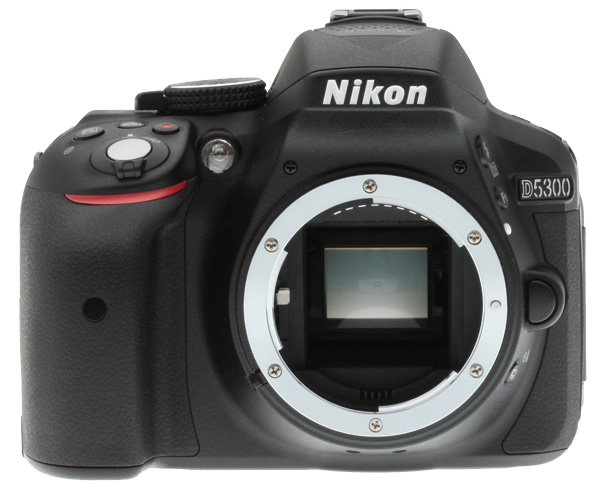
The D5300's enhanced DX-format, 24-megapixel APS-C-type CMOS sensor was designed to maximize the camera's resolving power by omitting the optical low-pass filter (as Nikon did earlier this year with the D7100). If the D5300 can minimize moire and anti-aliasing as well as the D7100 did, forgoing the OLPF in a consumer-friendly DSLR could be the move that opens up a realm of incredible detail and sharpness to a mass audience. What's more, the D5300 incorporates Nikon's latest processor -- the EXPEED 4 -- which even the company's most recently announced full-frame prosumer DSLR, the D610, doesn't have. This next-generation imaging engine purports optimize the DSLR's detail-versus-noise output and enhance color accuracy, and its improved ISO sensitivity -- now ranging from 100 to 12,800 in standard mode -- could up the ante on low-light performance.
How do all these upgrades translate in terms of image quality?
Check out our Nikon D5300 First Shots for yourself. And be sure to pit these test images side-by-side with those from the D5200, D7100 -- or any other camera we've ever tested -- via our Comparometer� image quality comparison tool.
For more information about the DSLR's new features and specs, read our first impressions Nikon D5300 review. In addition to image quality and performance enhancements, the camera also boasts built-in Wi-Fi functionality and GPS -- the first Nikon DSLR to do so -- as well as a more compact and lightweight design, and a 3-2-inch tilt-swivel LCD monitor that features a whopping 1,037K dots of resolution.
* Use our Still Life target images to look for detail (tone-on-tone, fine, highlights, shadows), as well as noise suppression, white balance, color accuracy and color shape retention.
-----------------------------------------------------------------------------------------------------
The "In Spec" lens: What does it mean, and could factory service be doing a better job?
by Roger Cicala
I'm going to open a can of worms today. I've been getting more and more emails from people telling me the same story that goes like this: "I've got this lens. It's awful. I've sent it in for adjustment and the service center tells me it's 'in spec' and nothing is wrong with it. Am I crazy?"
Second only to the dreaded 'impact damage -- warranty void', the statement that a "lens is in spec" seems to be some factory service centers' answer to far too many complaints. Don't get me wrong, sometimes there is impact damage, and the warranty should be void. But I can't think of any reason why this seems to happen only to certain brands, and never to others. Similarly, lenses a customer thinks are bad can be "in spec". The problem is, since the factory service center doesn't have to tell us what "in spec" means, it's open to a lot of abuse.
Now before I go any further, let me say that I feel the service center's pain, too. Most of those emails I get are accompanied by some useless JPEGs. Maybe one person in 10 who emails me has actually taken images that would indicate if there was a problem or not, so I'm certain the techs at the service center become a bit cynical over time.
So if you think a hand-held autofocus image, an ISO 6400 image, or a picture of some isolated object right in the center of the image is helpful in deciding if a lens is OK, then you aren't allowed to read this post yet. Instead read about how to test a lens, how to check for decentering, or what a lens with a tilted element looks like. Then you can come back and read this.
Read the story here: http://www.imaging-resource.com/news/2013/11/14/inspecting-an-in-spec-lens-what-does-it-mean-and-could-factory-service-be
Roger Cicala is the founder of LensRentals.com. Visit LensRentals.com to check out that cool lens you've been hankering for, and for some of the best customer service on the Internet!
-----------------------------------------------------------------------------------------------------
WE'VE GOT MAIL: Questions from readers, answers from IR
-----------------------
Please send us your camera and photography questions and comments (editor@imaging-resource.com). Not only will we respond to each and every one of your letters, but we'll also publish the best ones here as a resource for all our readers.
Sony HX300 Review
Hi Roger,
I very recently purchased this camera Sony HX300. While of course it has many compromises compared to mirrorless or DSLR system cameras, you get mostly what you pay for.
The one issue that frustrated me the most was the inability to turn off auto image review after taking a shot; this often meant taking a second shot "blind" just to get it. On even cheaper cameras its possible to set auto image review from say 2 seconds to none. I can't find this option in any menu -- if you know where it is then please advise. You touch on this problem somewhat in the review, but I was wondering if there was a solution?
Regards,
John
P.S. A very nicely done and comprehensive review, as usual!
---------------------
Hi John --
We couldn't figure out how to turn this off either, even after looking through the extended User Guide manual (which really isn't that extended). Spoke to a Sony rep, and he confirmed there's no way to turn off auto image preview/review on this camera. The amount of the delay or blackout or blindness (or whatever you want to call it) seems to be somewhat dependent on the speed of your SD card -- my Class 10 card keeps the delay reasonable, at least for single shots. It's definitely a frustrating flaw. Wish I had better news!
-- Roger
-----------------------------------------------------------------------------------------------------
NEW ON THE SITE
-----------------------
At http://www.imaging-resource.com/new-on-ir you can keep track of what's new on our main site. Among the highlights since the last issue:
- Astrophotography: Hubble's newest image shows some of the most densely packed stars in the cosmos (http://www.imaging-resource.com/news/2013/11/21/hubbles-newest-image-shows-some-of-the-most-densely-packed-stars-in-the-cos)
- Media: Fujifilm makes free digital magazine for X-series shooters (http://www.imaging-resource.com/news/2013/11/21/fujifilm-makes-free-digital-magazine-for-x-series-shooters)
- Photo Gear: ExpoDisc overhauled, now easier to use and more versatile (http://www.imaging-resource.com/news/2013/11/20/expodisc-overhauled-now-easier-to-use-and-more-versatile)
- Software: Adobe lowers bar to entry on Photoshop Photography Program ($10/month) (http://www.imaging-resource.com/news/2013/11/20/adobe-lowers-bar-to-entry-on-photoshop-photography-program)
- Battery Life: Pitting batteries head to head -- Canon vs. third party batteries (http://www.imaging-resource.com/news/2013/11/20/pitting-batteries-head-to-head-canon-vs-third-party-video)
- Leicaphile Wish List: Leica pairs up with Gagosian for limited edition Leica X2 (http://www.imaging-resource.com/news/2013/11/20/leica-pairs-up-with-gagosian-for-limited-edition-leica-x2)
- Real-Life Sample Images: Sony NEX-5T captures the magic with great real-world images -- even in low light (http://www.imaging-resource.com/news/2013/11/19/sony-nex-5t-sample-gallery-images)
- Test Lab Shots: How do images taken with the high-end, long-zoom Olympus Stylus all-in-one stack up? (http://www.imaging-resource.com/news/2013/11/18/olympus-stylus-1-first-shots-posted)
----------------------------------------------------------------------------------------------------
NEXT ISSUE
---------------
We'll see you next on Cyber Monday, December 2, with a regularly scheduled edition (and lots more news and analysis to share)!
SIGNOFF
-----------
That's it for now, but between issues visit our site for the latest news, reviews, or to have your questions answered in our free discussion forum. Here are the links to our most popular pages:
Newsletter Archive: http://www.imaging-resource.com/cgi-bin/dada-nltr/mail.cgi/archive/irnews
Daily News: http://www.imaging-resource.com/news
SLR Gear: http://www.slrgear.com
New on Site: http://www.imaging-resource.com/new-on-ir
Review Index: http://www.imaging-resource.com/camera-reviews
IR Photo Contest: http://www.dailydigitalphoto.com
Google + http://plus.google.com/+imagingresource
Facebook: http://www.facebook.com/imagingresource
Twitter: http://www.twitter.com/IR_Lab
Happy snapping!
Dave Etchells and Roger Slavens
editor@imaging-resource.com
| 













